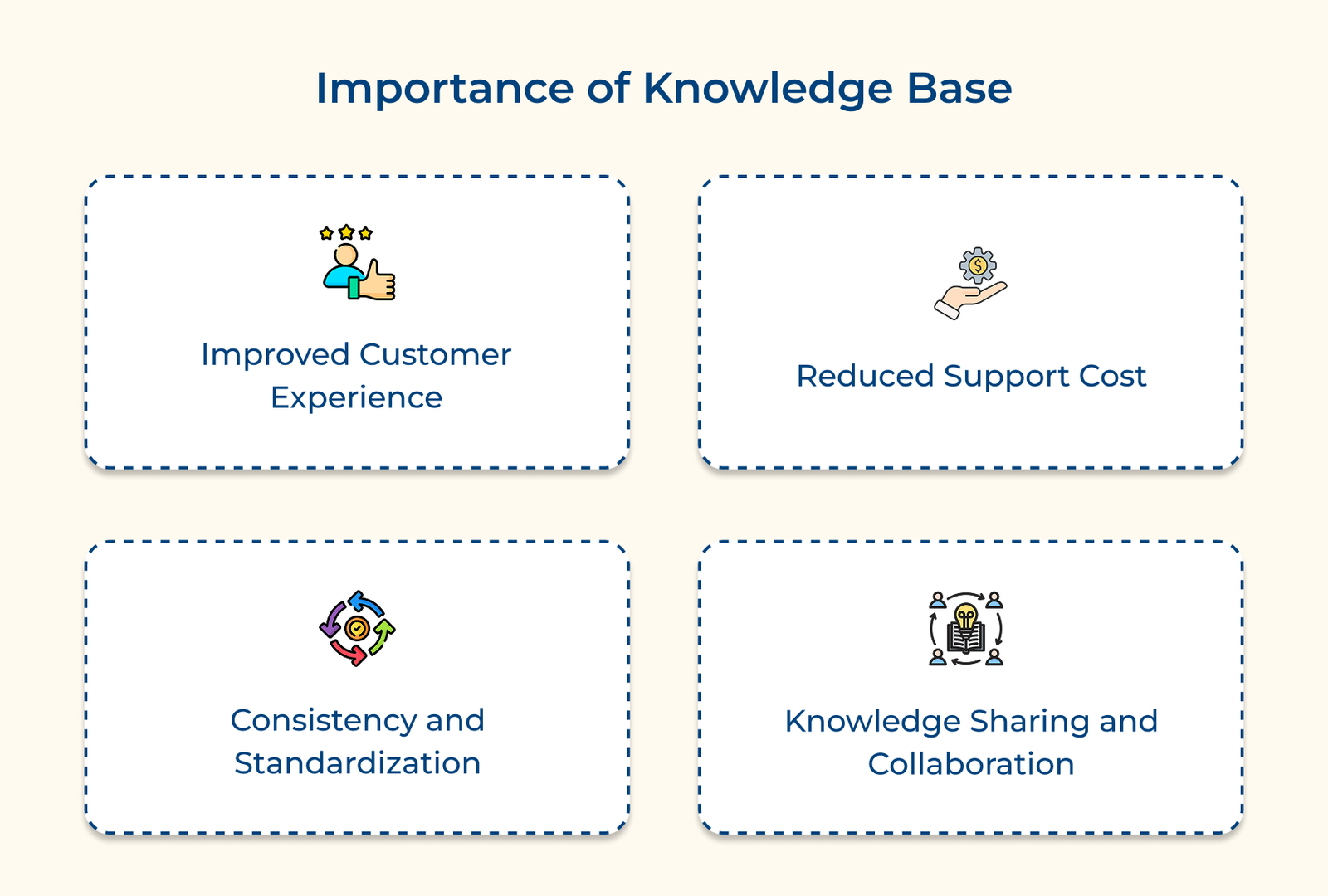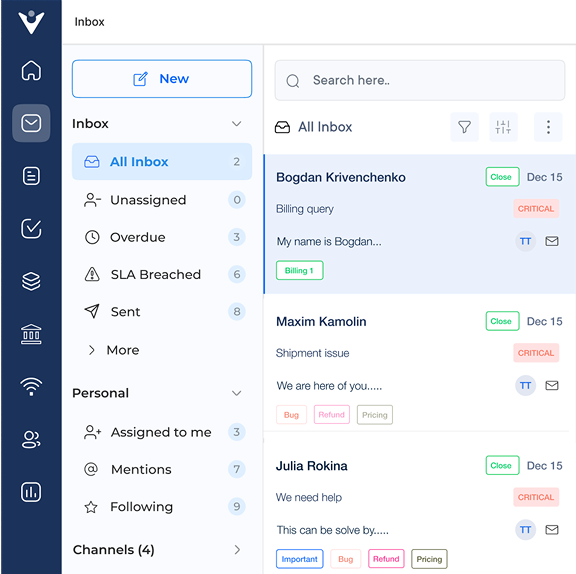Actionable Tips:
Employee contribution: Encourage employees to contribute to the knowledge base articles by sharing their expertise and insights. It can eventually help to build a culture of collaboration and continuous learning.
Intuitive interface: Designing a user-friendly interface that is intuitive and effortless to navigate is paramount. It should facilitate quick access to the required information for employees.
10. Provides Superior Customer Service Experience
An effective customer service knowledge base enables customers to quickly find solutions to their problems or answers to their questions. It can significantly reduce the number of support tickets or calls, saving customers and support agents time.
Actionable Tips:
Solution-centric content: Identify the most common customer issues and concerns to create articles in the knowledge base that address them. Make sure the articles are easy to search and navigate, with helpful visuals.
Automation: Implement a chatbot to recommend relevant articles from your knowledge base when customers ask for help. It can save the customer time and reduce the support agents’ workload.
Seek feedback: Encourage customer feedback and use it to improve your knowledge base continuously. Ask customers to rate the helpfulness of articles or suggest new topics they would like to see covered. It enables you to provide more personalized and effective support to your customers.
11. Improves Your Search Rankings Due to Better SEO Capabilities
Enhancing online visibility and attracting more visitors to a website is crucial for businesses. An optimized knowledge base can boost your SEO as more people come to find their answers directly on your site.
Better search rankings are achievable by ensuring customers can easily find the information they need while improving the website’s search engine rankings. Companies can achieve both goals by offering top-notch content rich in relevant keywords and directly addressing common inquiries.
Actionable Tips:
Clear language and headings: Use headings and subheadings to segregate content into easily digestible sections. Make sure to keep the language clear and concise language throughout.
Keyword optimization: Use targeted keywords in your external knowledge base content that align with your customer’s search. Build your knowledge base around the words your customers search for.
Internal links: Include links to related pages within your knowledge base to help users find more valuable information on your site.
12. Makes Remote Working & Team Collaboration Easier
The shift towards remote work has become the norm since the pandemic, forcing organizations to operate with remote teams. A customer service knowledge base can help remote workers navigate complex workflows, share updated information, and communicate better.
Setting up the right kind of knowledge bases helps customer service teams find answers faster, avoid repeated work and stay on the same page. The result? Less time wasted, fewer mistakes, and a smoother workflow.
Actionable Tips:
Document workflows and processes: Documenting the workflows will facilitate consistency and reduce errors or confusion for remote teams.
Encourage collaboration and communication: Establish a collaborative environment by utilizing features like discussion forums, commenting, or chat functionalities within the knowledge base.
Take Advantage of Knowledge Base to Elevate CX
A solid knowledge base gives customers clear answers without making them wait. It cuts down on support tickets, saves time for all and builds trust by showing the company knows what it’s doing. When done right, it improves the customer experience and quietly strengthens your reputation.
An ideal knowledge base helps people find answers without waiting around. When customers can solve problems on their own or get clear, accurate help fast, they’re far more likely to stick around. It’s not about bells and whistles, it’s about making support easier, faster and more useful.















